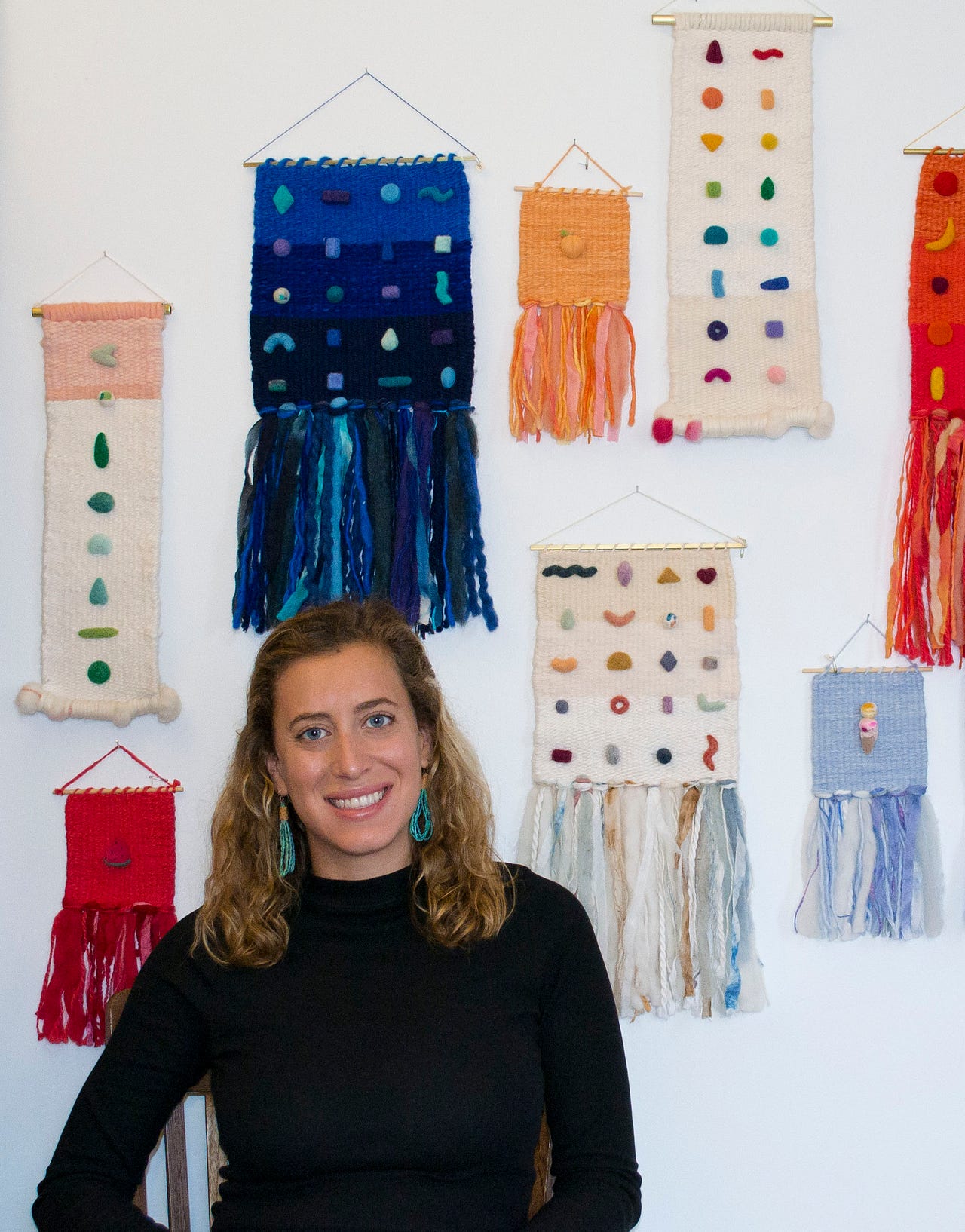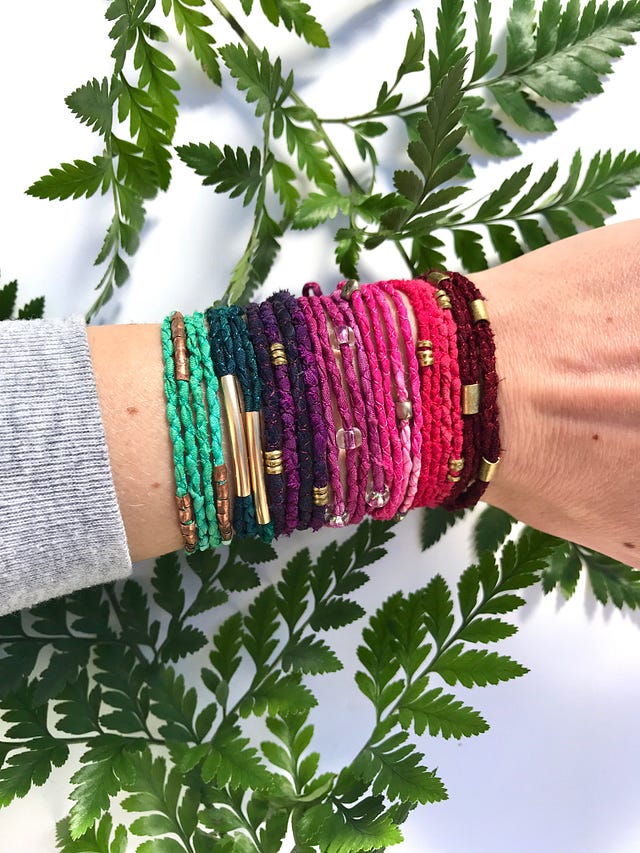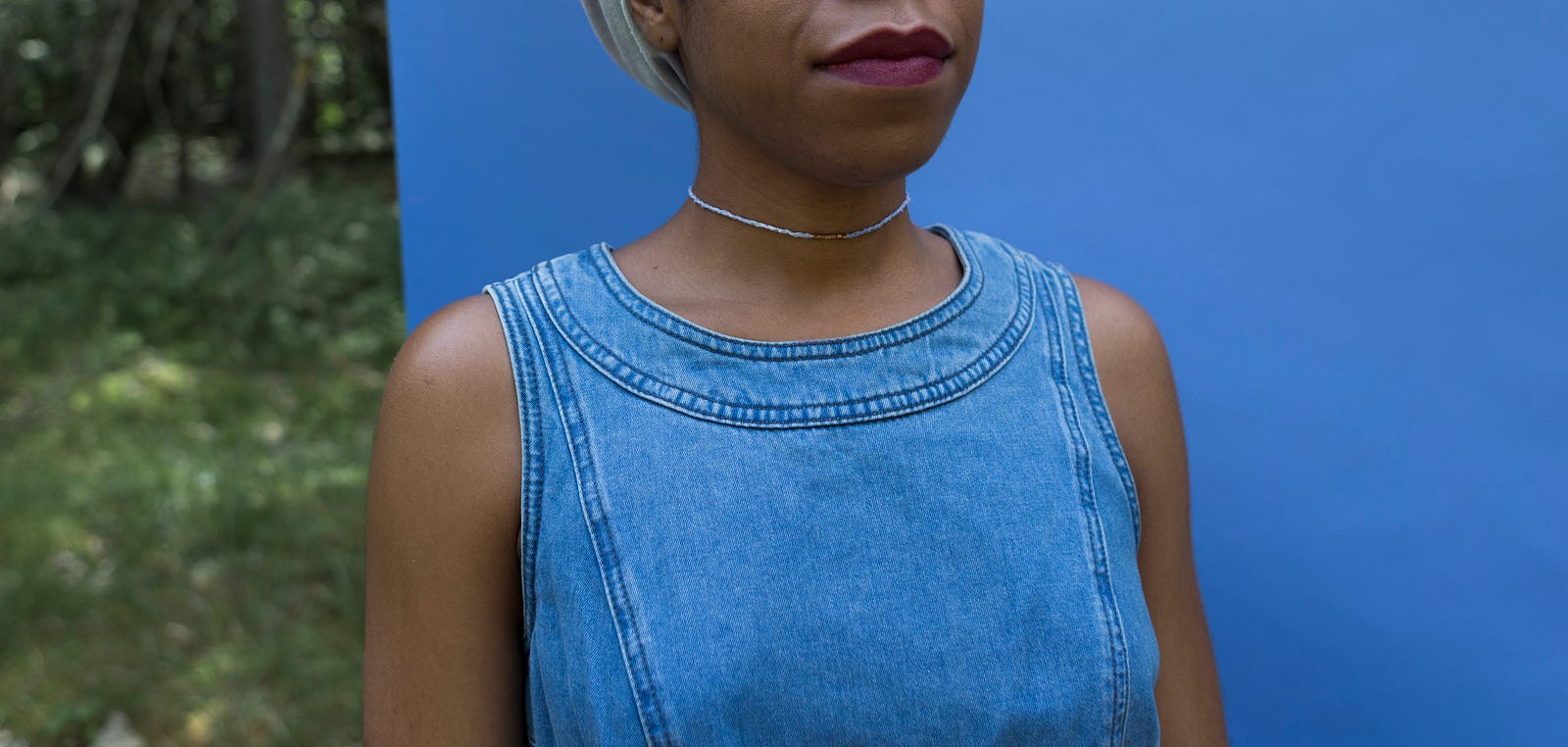The best part of working on this series has been speaking with artisans about how they’ve been able to discover and bring traditional crafts(wo)manship back to the mainstream through a modern perspective.
This week, I spoke with Emilia Stern, an artist and craftswoman based in Kingston, NY about what drew her to explore the world of hand dyeing, fiber artistry, and weaving. Individually, these art forms trace back as far as 5000 B.C. Like many handicrafts, these practices were born out of necessity rather than simply for fashion’s sake. However, as production methods continued to advance throughout the 18th and 19th centuries, the world of textile experimentation began.
For Emilia, these art forms exude purity and mastery of color, texture, and detail — a combination of elements that she fell in love with at a young age.

The little things
Growing up in the rural Hudson Valley meant that Emilia and her sister found themselves playing outside in the forest, making up games for each other or working on small arts and crafts projects. Until third grade, she grew up without a TV set in the house, so developing her own creativity was as natural to her as breathing.
Surprisingly though, it was sports that drew her eye as an energetic child. In Emilia’s words, “Looking back I see (as an active and fierce competitor but also major introvert) how important it was for me to have that balance of playing team sports and making art by myself — because it’s still just as important to me in my life today.”
Like so many self-taught artists, Emilia was drawn toward crafts more than fine art practices like drawing or painting. It also took time and personal development for her to realize that you could be an artist without having the more traditional art media arsenal under your belt. She recalls, “I’d spend hours in my room cutting up magazines and making collages on my wall, notebook covers, and various other surfaces. Collaging was the first medium that really made sense to me in the way that I see and think. It’s like a puzzle that you get to create.” Comments like this only serve to reinforce her attention to detail.
During her time at the University of Mary Washington, a small liberal arts state school in Virginia, Emilia intended to play soccer. For health reasons, her soccer career came to a halt, but her artistic career bloomed. At her small school, seats were limited in the arts classes and she found herself highly curious without an outlet.
Her mom was the one who discovered a whole new angle to entering the arts: Fabric Dyeing and Painting and Intro to Costume Construction courses held in the theatre department. These classes laid the foundation for Emilia’s love of working with fabrics as a medium. She recalls, “I was immediately consumed by the materials and the work in both courses. Sewing was easy and meditative and fabric dyeing was fun and experimentative.”
After that semester of learning, the costume department asked Emilia to stay on. Working in the department, along with more traditional classes in the art school (she made it into the classes she was curious about, in the end), put her in contact with excess fabric scraps and an outlet in which to give them new life through sculptures, installations and weavings.


Creation through silk
Following her graduation, Emilia found herself working for different artists and small businesses in environments that helped her to quickly learn the skills she’d need. She progressed from dyeing and installation experimentation into fiber jewelry-making, thanks to a book by Lorna Moffat called Silk Unraveled — a project-based book about working with silk.
Emilia had a surplus of silk that she ‘rescued’ from the costume shop in college and took to her sewing machine to practice one of the techniques in the book that she was most drawn to — creating cords using a zig zag stitch. As many artists will tell you, and Emilia is no exception, the art often informs the artist. In learning this new technique, Emilia made a series of long narrow cords to highlight the colors of silk that she had hand-dyed and eventually turned them into a necklace that looked both strong and delicate at once.

Taking the leap
Turning any endeavor into a business is never easy but in Emilia’s case, the transition has been slow and steady. She first showed some of her necklaces to her aunt, who is a fiber artist herself. Not only did her aunt encourage her to keep practicing, but she brought them to the gift shop she ran and put them up for sale. Later that same year, Emilia opened up her Etsy shop and was accepted into her first craft show. Since then, she’s added more shows, launched her website, and introduced woven art alongside her silk work.
Emilia’s viewpoint as an artist reflects her upbringing close to nature. She creates sustainably using silk that is repurposed, headed for the scrap pile, or is Peace Silk, created non-violently in India. She sources her bead and metal pieces from businesses supporting fair trade and/or sustainable practices and 5% of each sale is donated to Honor The Earth – an organization with a mission of creating “awareness and support for Native environmental issues and develop needed financial and political resources for the survival of sustainable Native communities.”
Going forward, Emilia has her eye on more large scale pieces, developing installations, and finding representation for her work in gallery settings. She is also looking out for artists and brands to collaborate with, which, as an advocate for creativity, really bolsters me up. This is an attitude that I hope grows — creating together offers immense reward.



A parting thought
I like to ask the same question to every artist I speak with: what advice would you give to someone interested in creating for themselves?
Emilia said, “Have patience and don’t get discouraged. Art is so personal and it can be really tough to deal with rejection. I’m still working on that. Enjoy the process. It can be really hard but [it’s] incredibly rewarding. I have two other jobs in addition to my business and though it would be wonderful to be making art full time (and hopefully I will be some day), it’s also important to know that it’s okay not to. Always keep learning. There are so many resources out there and every new experience will manifest itself in your work.”
To see more of Emilia’s work or to place a custom order, visit her website or find her on Instagram @ehstern. She’ll also be showing at The Phoenicia Flea, Made in Kingston, and the BUST Craftacular in Brooklyn this holiday season.
What other New York craftswomen inspire you? Share your thoughts with us by tweeting us @nooklyn, reaching out on Facebook page or finding us on Instagram @nooklyn.stories!
All images except for necklace image courtesy of Emilia Stern | https://www.ehstern.com/
Necklace image taken by Margrit Wenzel | http://www.margritwenzel.com/